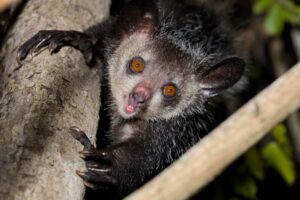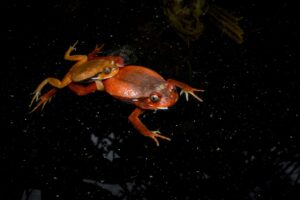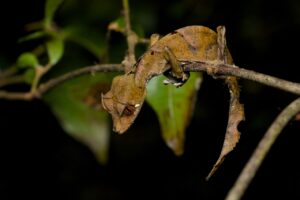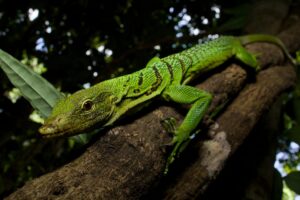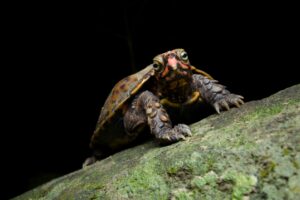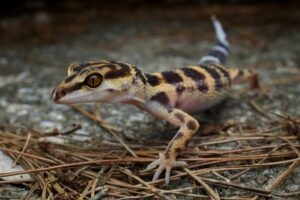This time, I visited Komodo National Park, located to the west of Flores Island in Indonesia, in search of wildlife. Most standard tours are day trips departing from Labuan Bajo, the gateway town on Flores. However, since the park’s islands take nearly half a day by boat, these tours usually enter the park late in the morning, spend only about an hour, and return by evening. The result is often a disappointing experience: short stays and sluggish Komodo dragons (Varanus komodoensis) resting in the midday heat.
Determined to overcome the frustration I felt on my visit about ten years ago, I obtained a special permit this time to stay two nights and three days inside the national park for a deeper wildlife exploration.
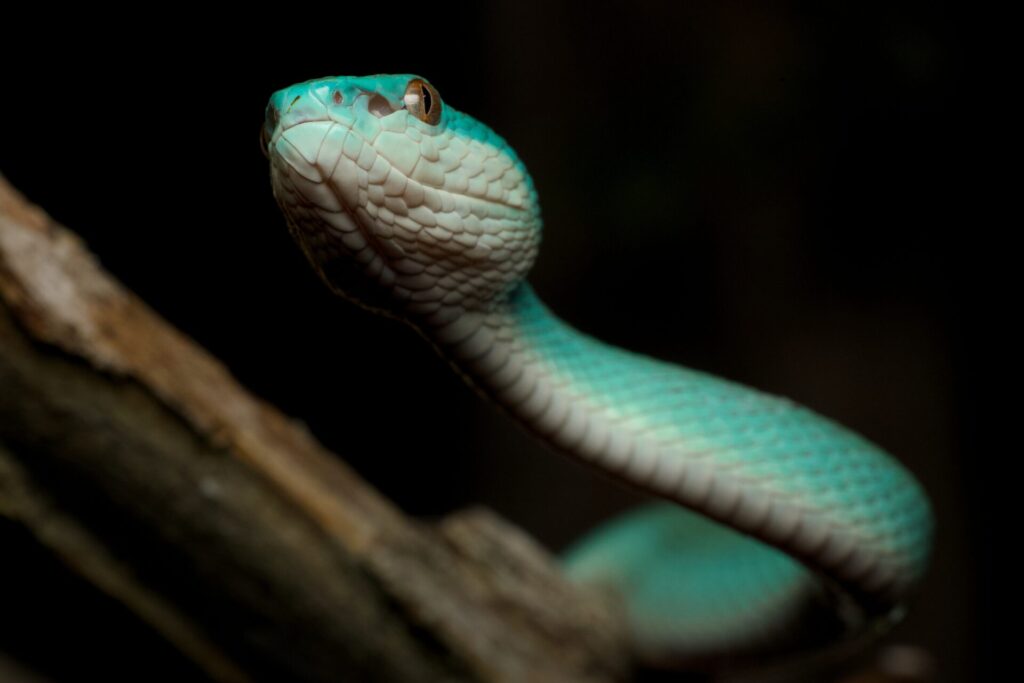
Strong Currents and Careful Planning
First, it should be noted that the waters around Komodo National Park are known for their extremely strong currents, which even reverse direction depending on the tide. This means safe boat passage is limited to specific times and routes, making tide-based planning absolutely essential.
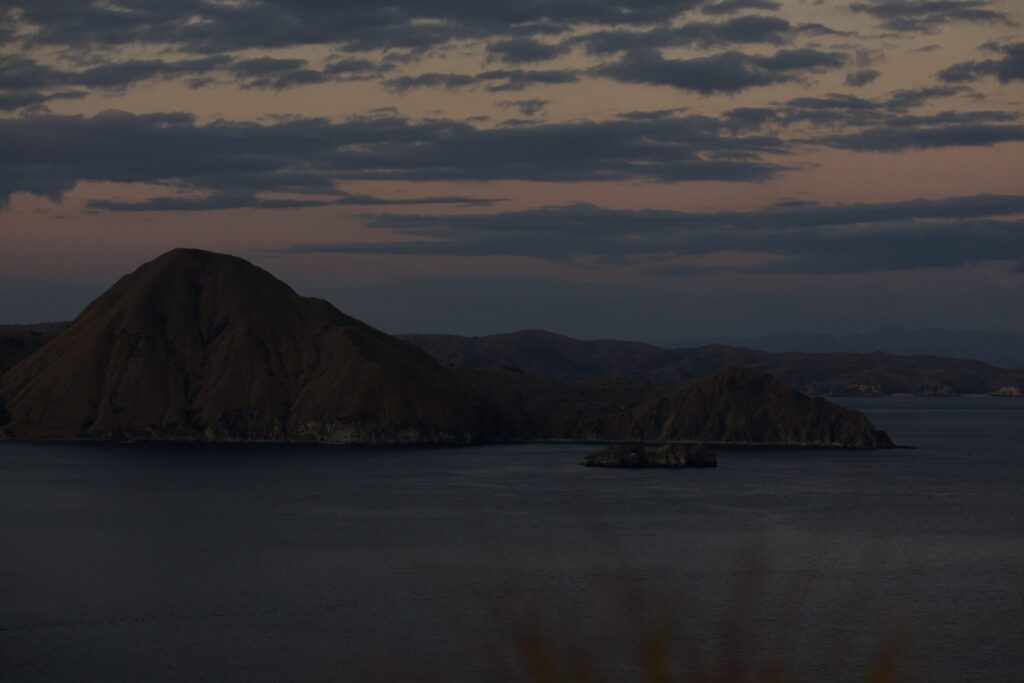
Snorkeling at Coral Reefs and Manta Points
Our first stop was a coral reef site famous for its spectacular marine life. Jumping into the water, I found myself surrounded by coral gardens and schools of fish denser than any aquarium.
We also snorkeled at a cleaning station where reef manta rays (Manta alfredi) gather before heading to our main destination of the day: Padar Island.
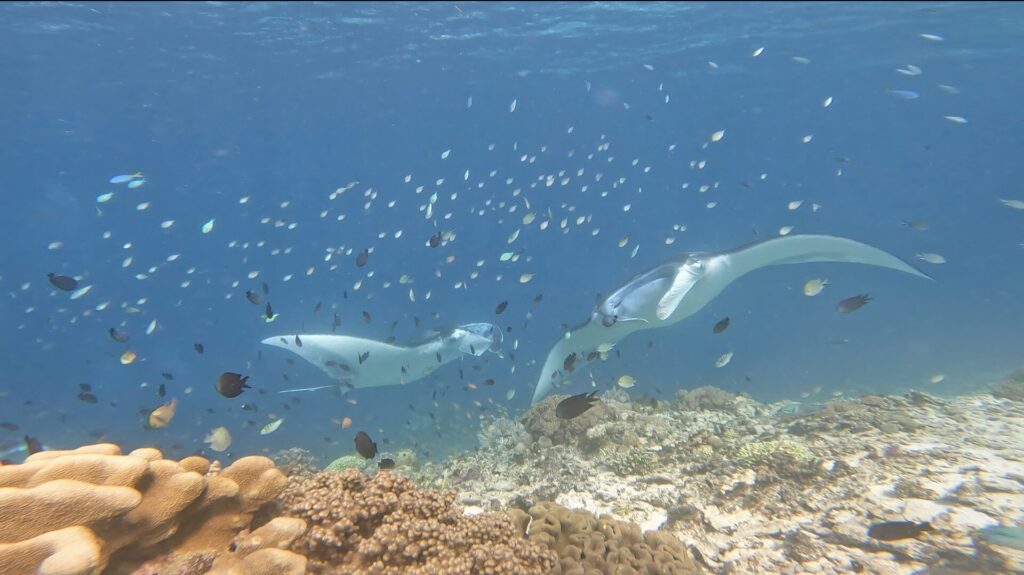
Hiking and First Encounters on Padar Island
Upon arrival, we hiked to Padar’s famous viewpoint. Along the way, we encountered several interesting species.
- Singing bushlark (Mirafra javanica) – spotted in the grasslands alongside grasshoppers.
- Rodents – Padar hosts several species, including the Komodo rat (Rattus komodensis) and the Polynesian rat (Rattus exulans), though sightings are usually brief and difficult to identify in low light.
- Timor deer (Rusa timorensis) – appeared at dusk and remained active throughout the night, suggesting strong nocturnal habits.
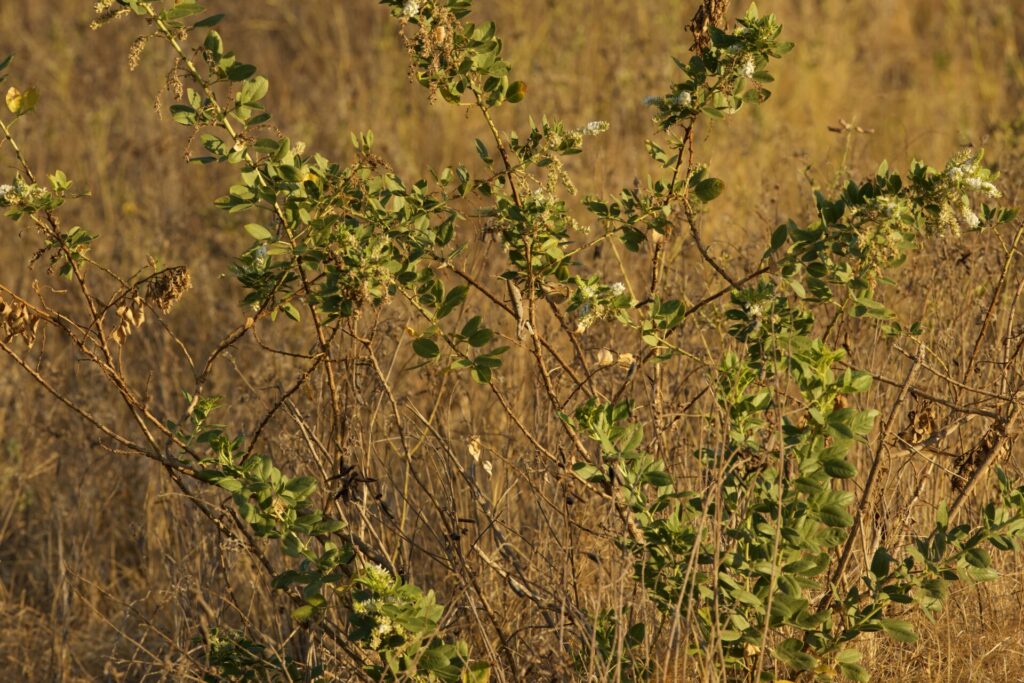
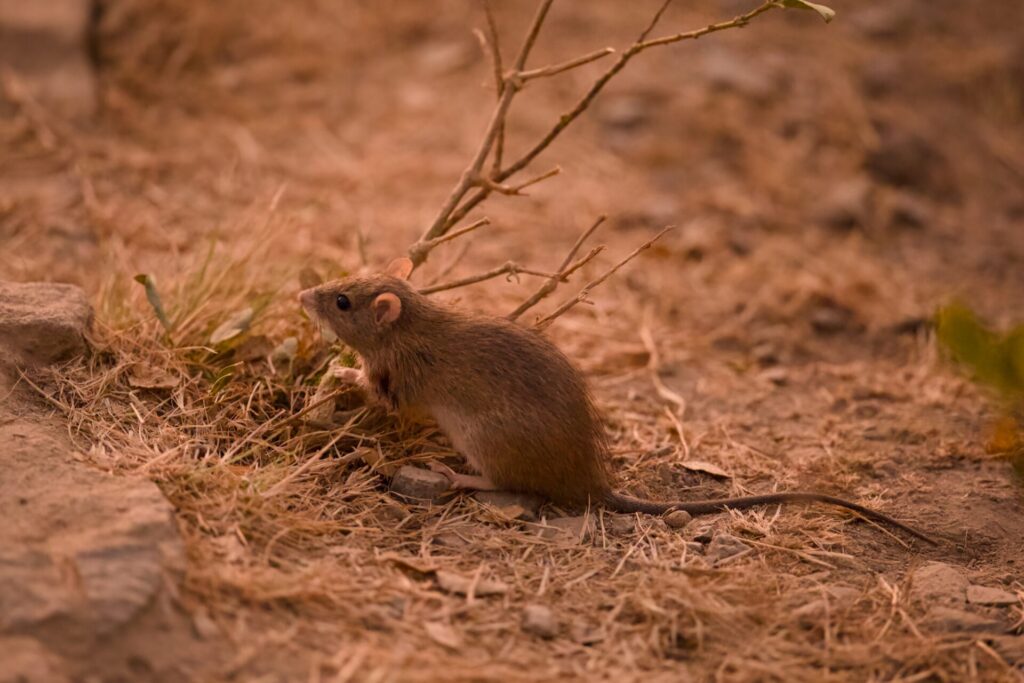
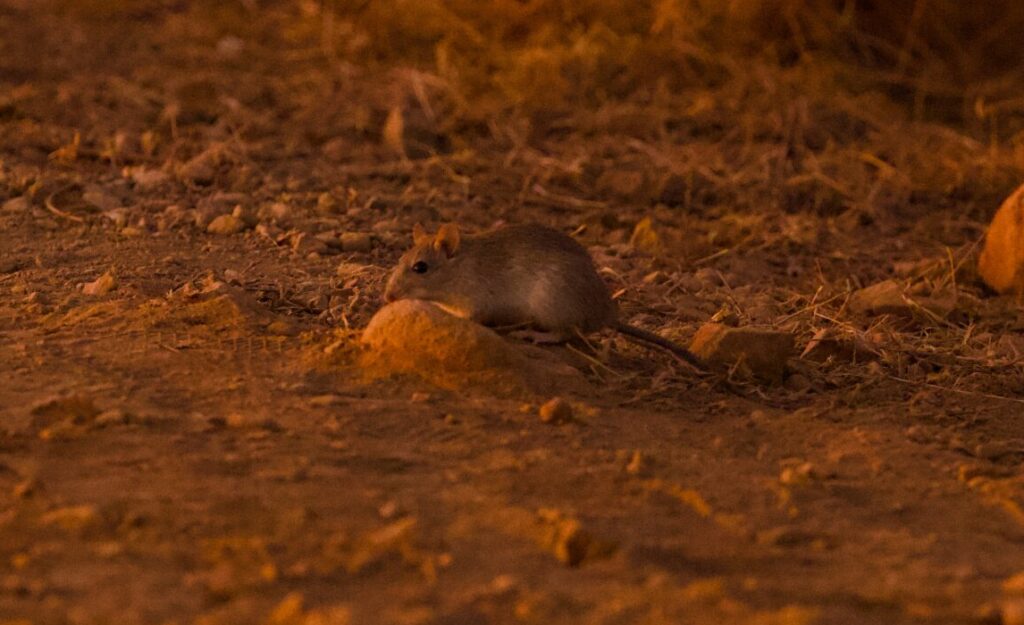
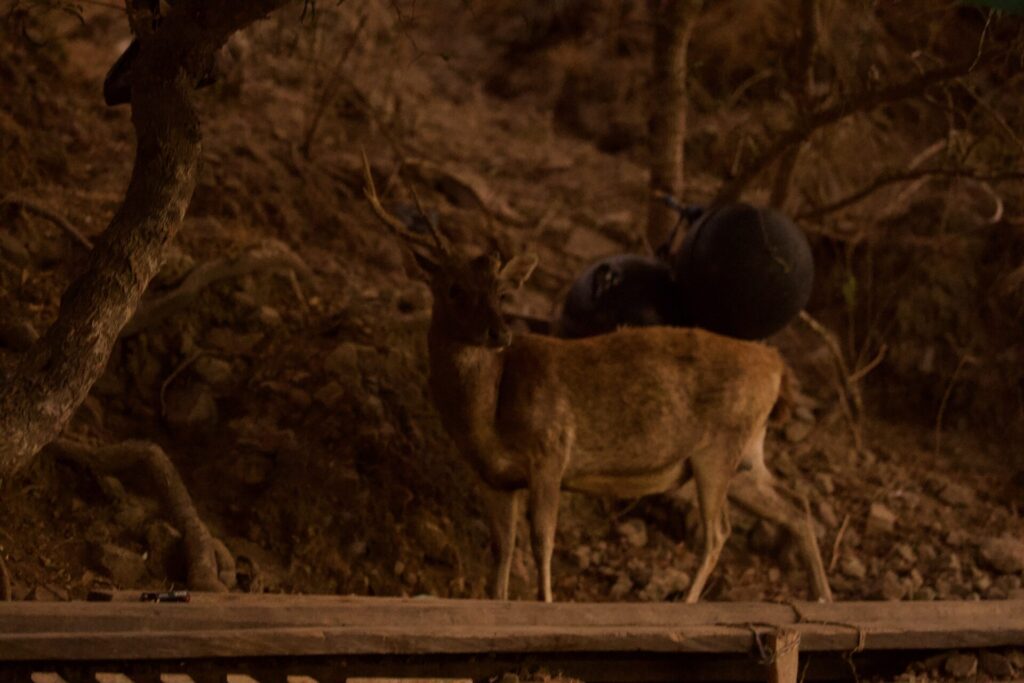
The Iconic Blue Pit Viper
For most visitors, Padar Island is synonymous with the breathtaking landscape, but for me, it is also the home of the extraordinary blue pit viper.
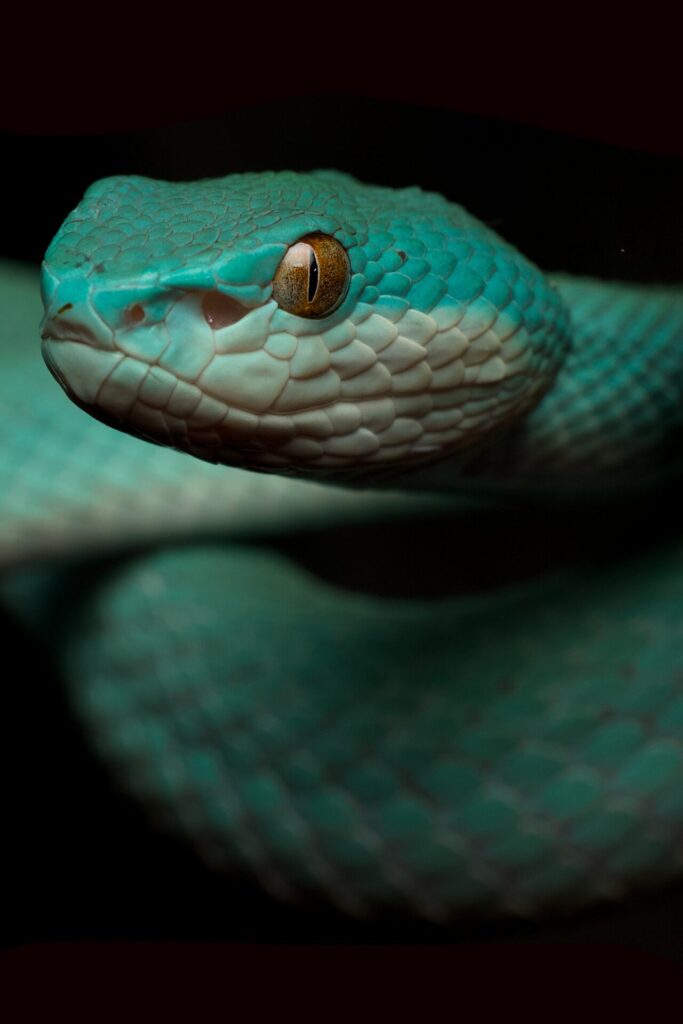
This snake is a color morph of the white-lipped island pit viper (Trimeresurus insularis), a species widely distributed across Komodo, Rinca, and even Java. Yet, only on Padar Island does the blue variant occur with remarkable frequency. Similar to the blue morph of the Ishikawa’s frog(Odorrana ishikawae) in Okinawa, this coloration results from the absence of yellow pigment, leaving the scales a vivid blue.

While such mutations can theoretically occur anywhere, their survival rate varies. Padar’s semi-arid environment likely reduces predation pressure, allowing the blue morph to thrive. Local guides estimate that nearly 1 in 6 individuals here display the rare blue coloration—an astonishingly high frequency compared to nearby Rinca Island, where they are almost never seen.
Just a few meters further, I encountered a green morph of the same species. Surprisingly, it had the body of a legless ant clamped onto its mouth, an odd sight that made me wonder what kind of “life story” this snake had endured. Hopefully, the next shed will free it from its painful companion.
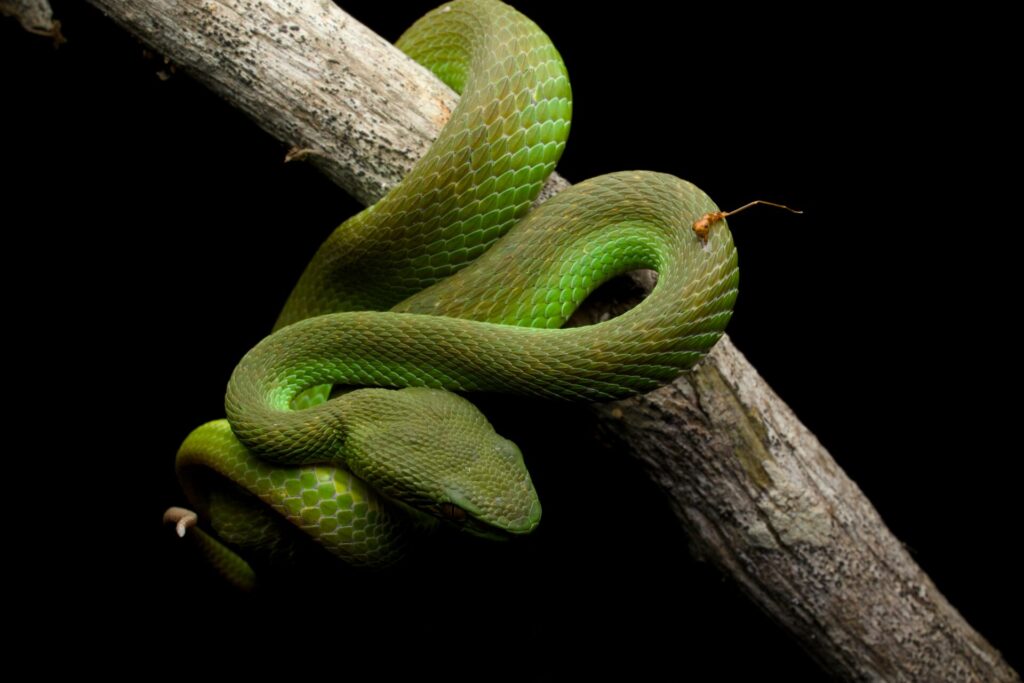

By the end of the evening, I had recorded a total of five pit vipers, with the blue one being the unforgettable highlight.
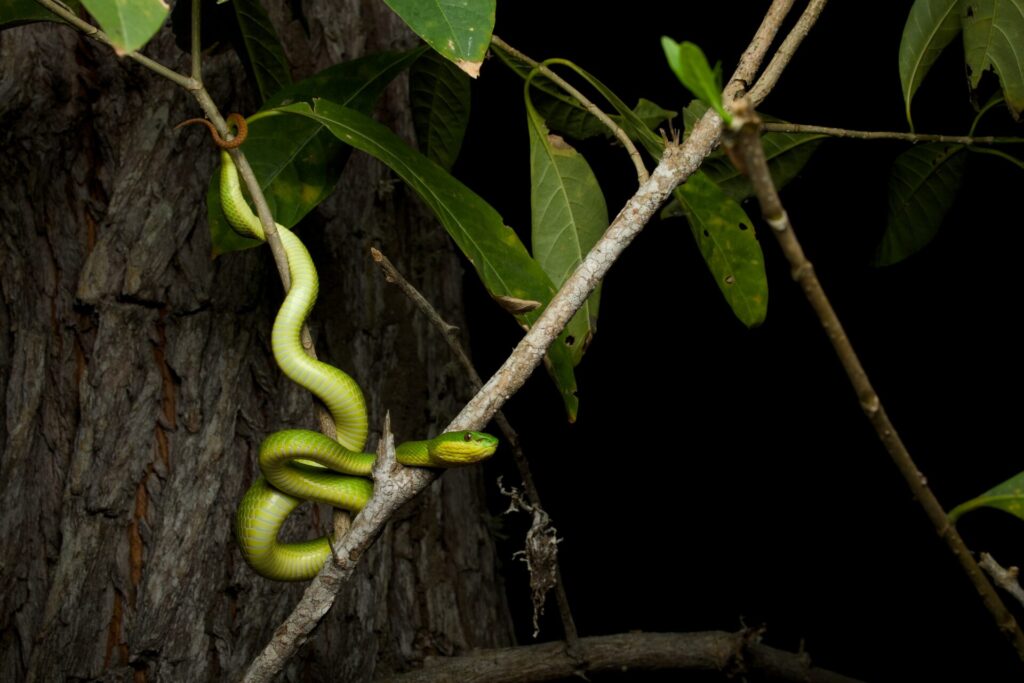
Other Reptiles and Signs of the Dragon
Other notable sightings included a massive Tokay gecko (Gekko gecko) nearly 30 cm long, several skinks (Scincidaesp.), and fresh tracks of the mighty Komodo dragon (Varanus komodoensis) along the beach.
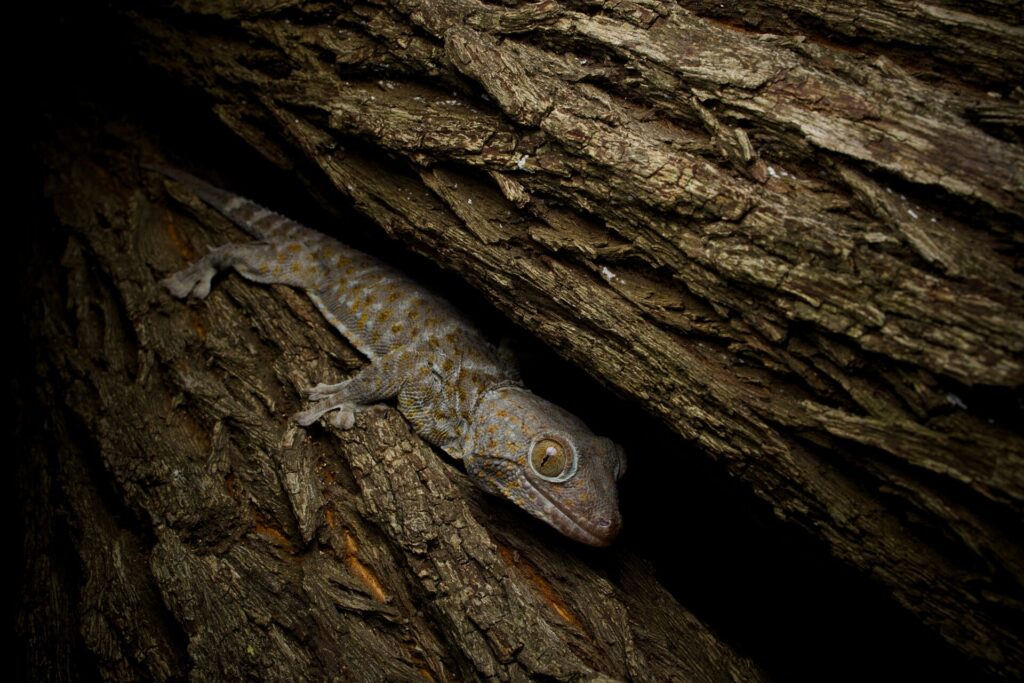
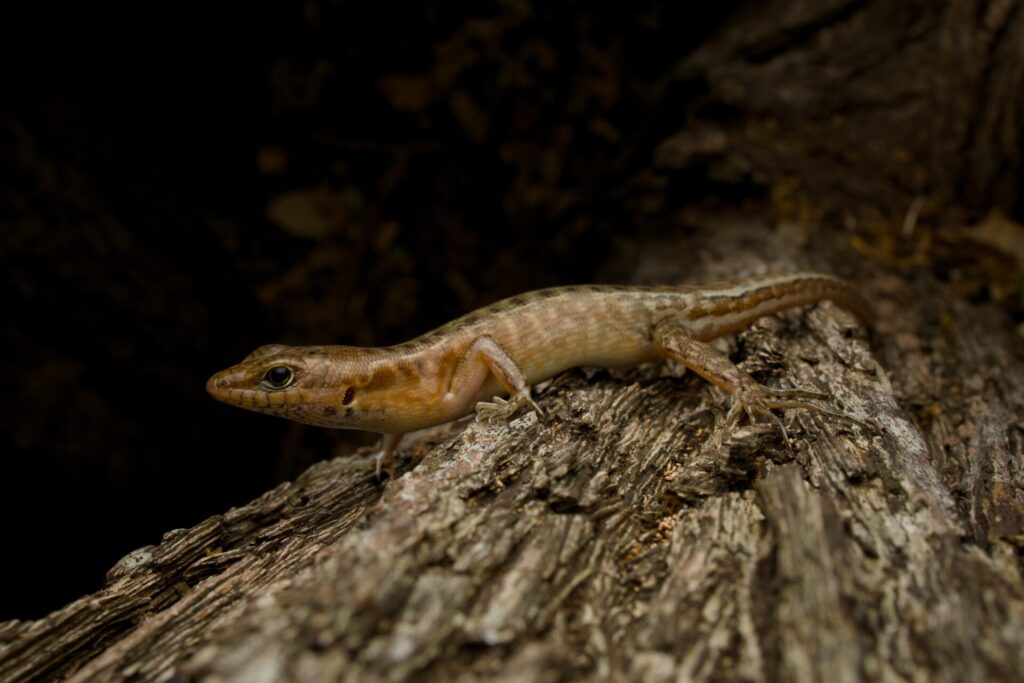

Dendrelaphis inornatus
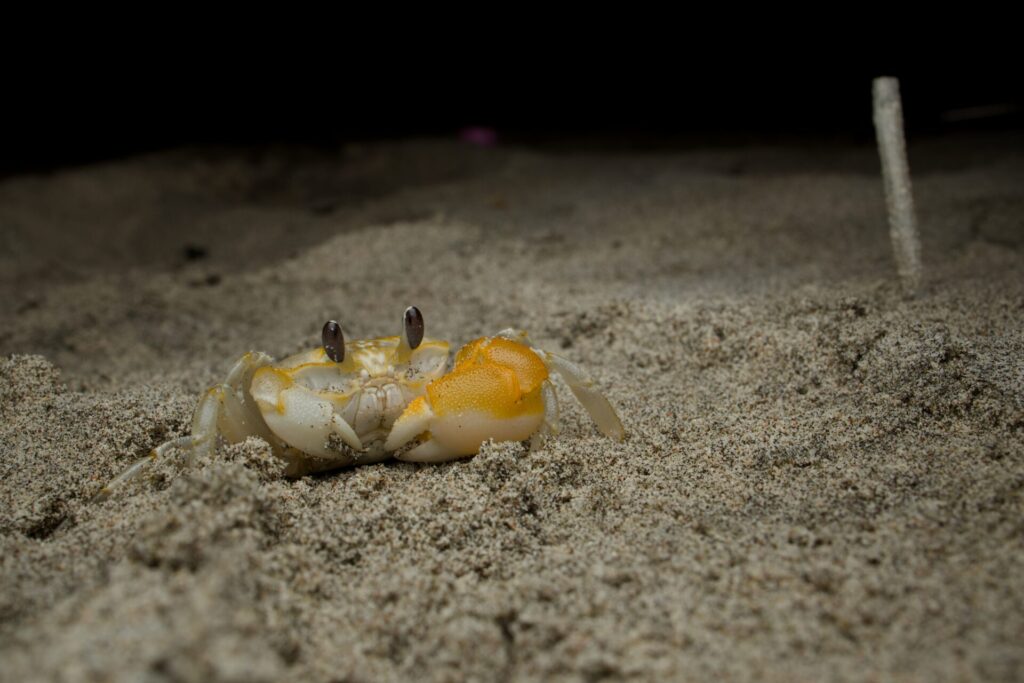

It was an incredibly rewarding first day of herping in Komodo National Park.
To be continued in Part 2…



